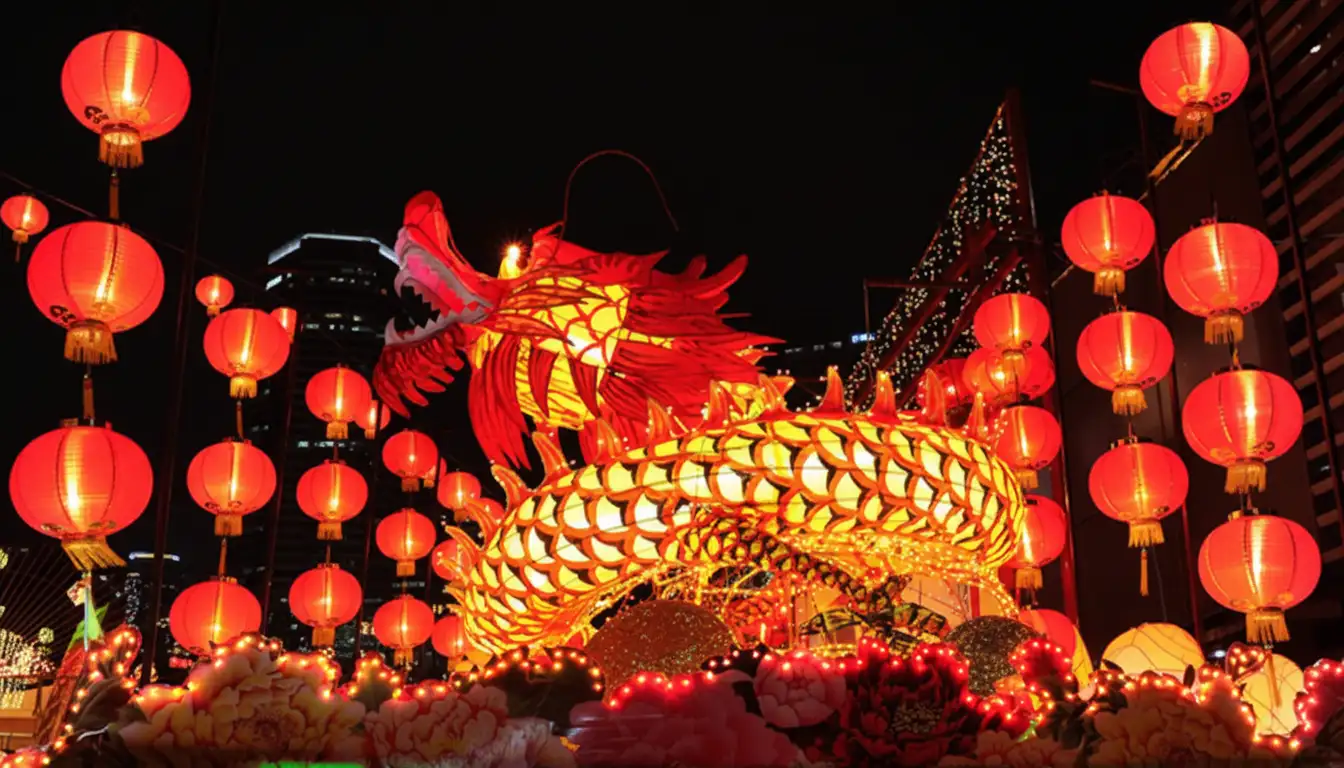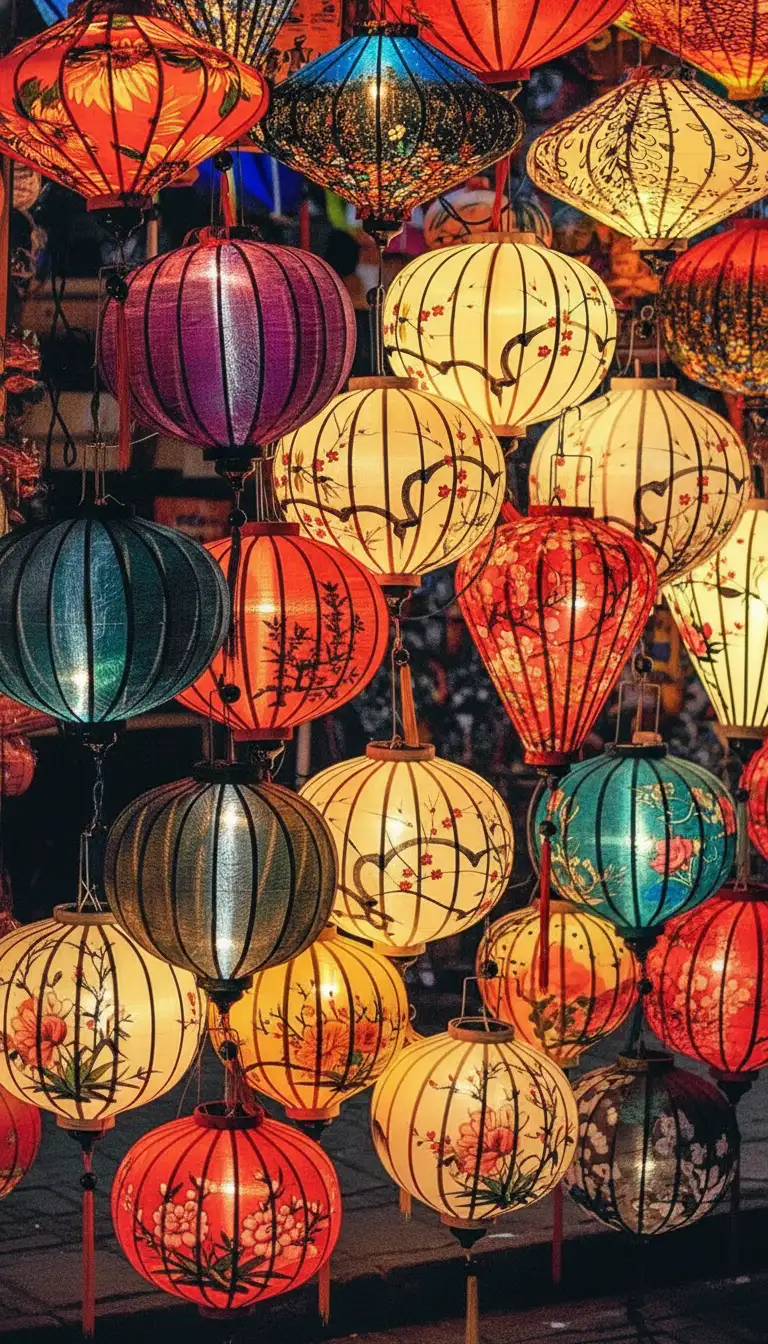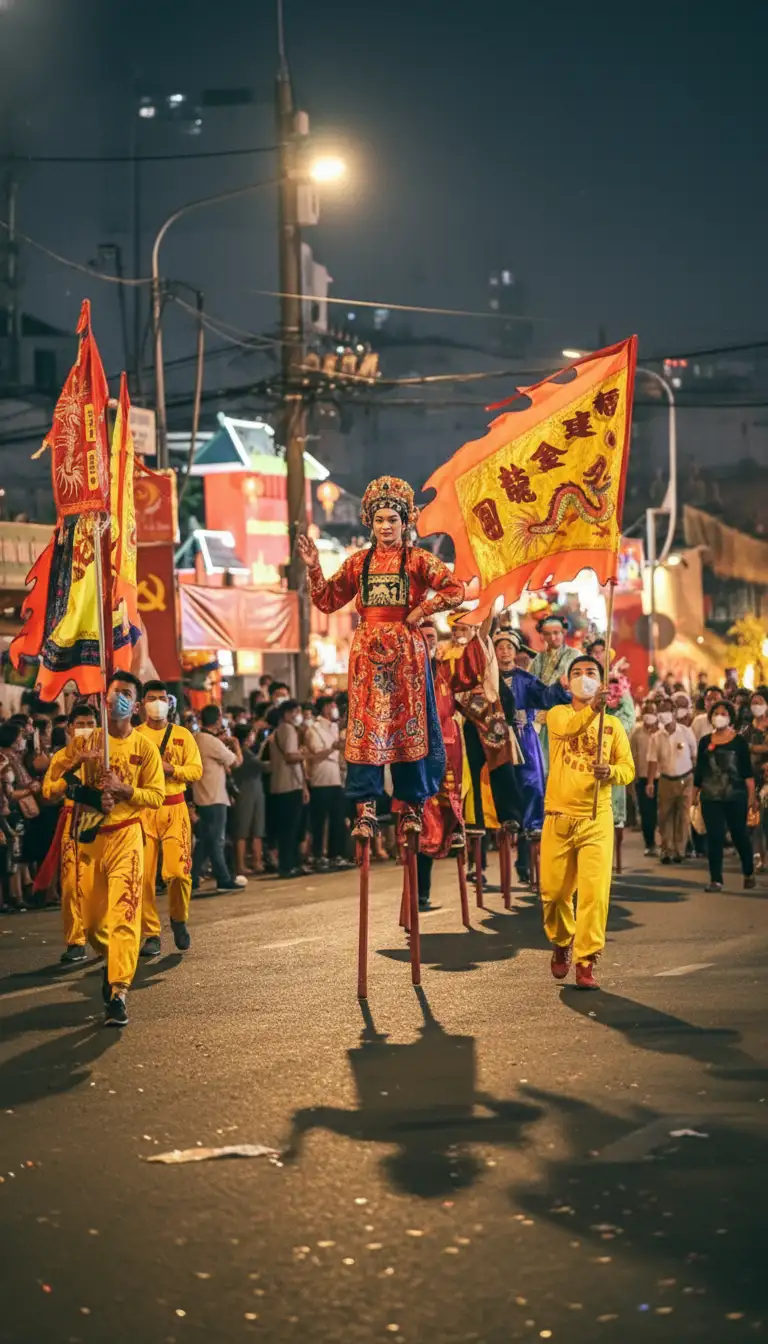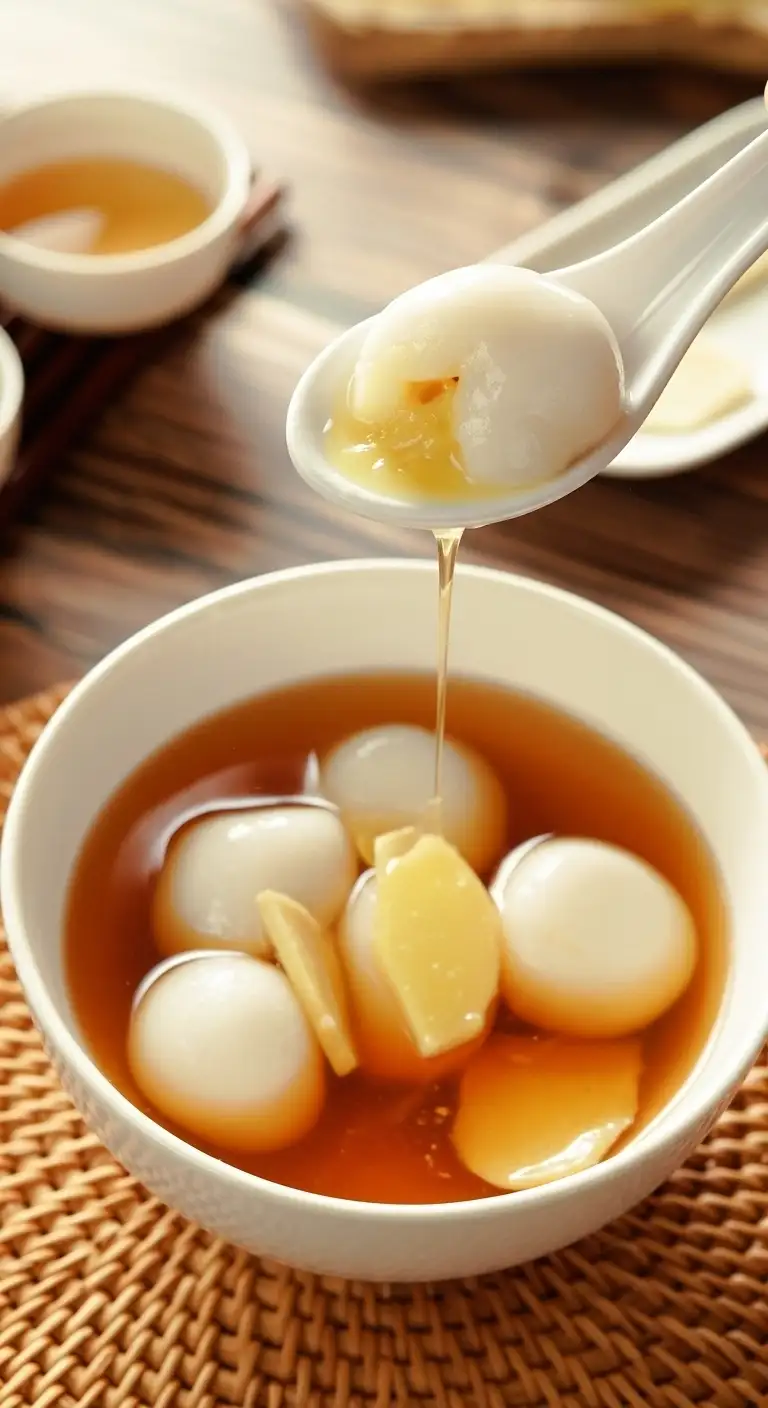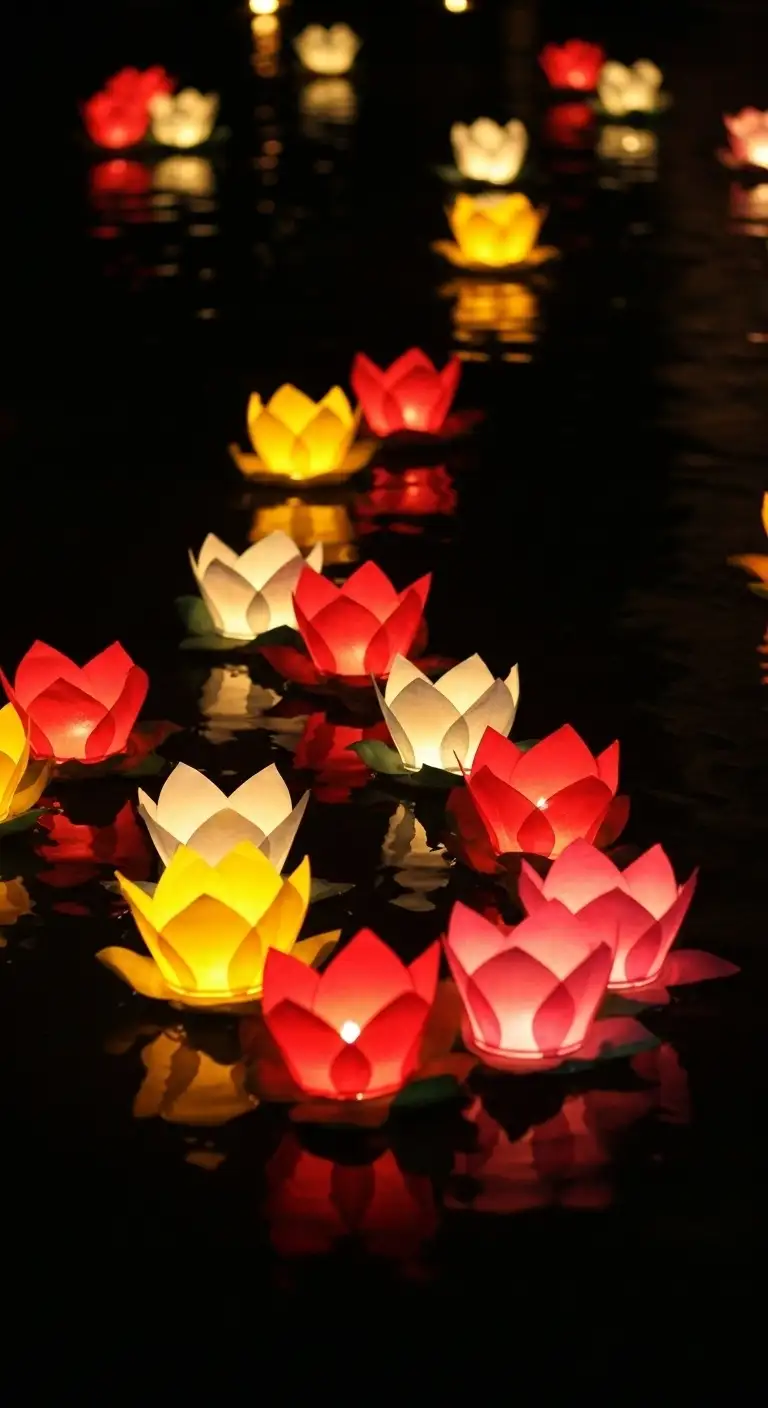Quick Facts
| Data Field (Title) | Content | Icon/Note |
|---|---|---|
| Vietnamese Name | Tết Nguyên Tiêu (or Rằm Tháng Giêng) | Nguyên means 'first,' Tiêu means 'night' (First Night of the Full Moon). |
| Date | 15th day of the 1st Lunar Month (Rằm Tháng Giêng). | Marks the end of the month-long Tết (Lunar New Year) celebrations. |
| Focus | Ancestor worship, spiritual purification, praying for good fortune, and family reunion. | Considered the most important full moon of the year. |
| Key Activities | Temple/Pagoda visits, lighting lanterns, enjoying vegetarian food, and cultural performances. | |
| Most Vibrant Spot | Chợ Lớn (Chinatown), District 5, Ho Chi Minh City | Known for spectacular lantern displays and dragon dances, a National Intangible Cultural Heritage. |
I. Overview: The Most Important Full Moon
Tết Nguyên Tiêu, or the First Full Moon Festival, is one of the most culturally significant annual events in Vietnam. It takes place on the 15th day of the first lunar month, signifying the first full moon of the new year and officially marking the conclusion of the Tết (Lunar New Year) holiday season.
The festival is a deeply spiritual time focused on reflection, ancestor worship, and seeking blessings for peace and prosperity in the year ahead. It is widely celebrated across the country, especially within the Buddhist community and the Vietnamese-Chinese (Hoa) community.
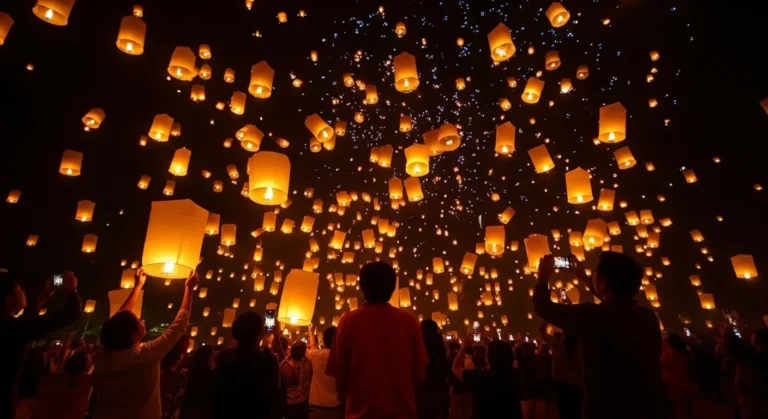
II. Spiritual Practices and Customs
The activities during Tết Nguyên Tiêu revolve heavily around tradition, reverence, and purification:
Temple Visits and Prayers: On this day, devout Vietnamese flock to pagodas and temples to offer incense and pray. It is believed that the prayers made on the first full moon are the most sacred and effective for ensuring a year of happiness, health, and good luck.
Ancestor Worship (Cúng Nguyên Tiêu): Families prepare an elaborate feast (Mâm cỗ cúng), usually offered at noon, to honor their ancestors and deities. The offering usually includes a blend of savory (meat) and vegetarian dishes, though many families opt for a purely vegetarian meal to “purify the soul.”
Vegetarianism: Many people practice vegetarianism (ăn chay) on this day as a spiritual cleansing ritual, reflecting Buddhist influence.
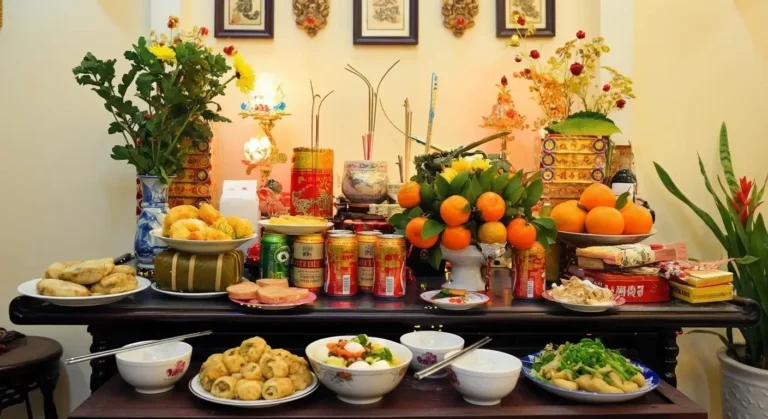
III. Key Cultural Experiences
While the spiritual aspects are paramount, the festival is also known for its lively public cultural displays, especially in major urban centers:
1. The Lantern Festival (In the South)
Vibrant Displays: Cities like Ho Chi Minh City, particularly the Chợ Lớn (Chinatown) area of District 5, host grand public celebrations. Streets are brilliantly adorned with rows of colorful, intricate lanterns.
Light and Hope: The lighting of lanterns symbolizes a desire for harmony, prosperity, and the guidance of light into the new year. The Nguyên Tiêu Festival in HCMC is recognized as a National Intangible Cultural Heritage for its spectacular artistry.
2. Dragon and Lion Dances
Street Performances: In celebration areas, energetic Lion (Lân) and Dragon dances are frequently performed. These captivating displays are believed to scare away evil spirits and usher in good fortune and success for the community.
3. Traditional Food
Chè Trôi Nước: Families traditionally eat Chè trôi nước—sweet glutinous rice balls floating in a ginger syrup. The round shape of the balls symbolizes the full moon and represents the desire for family unity and completeness (đoàn viên).
Visitor Information: For tourists, visiting a local pagoda in the afternoon or evening and exploring the beautifully lit streets of District 5 in Ho Chi Minh City offers the most vibrant and memorable experience of the festival.
